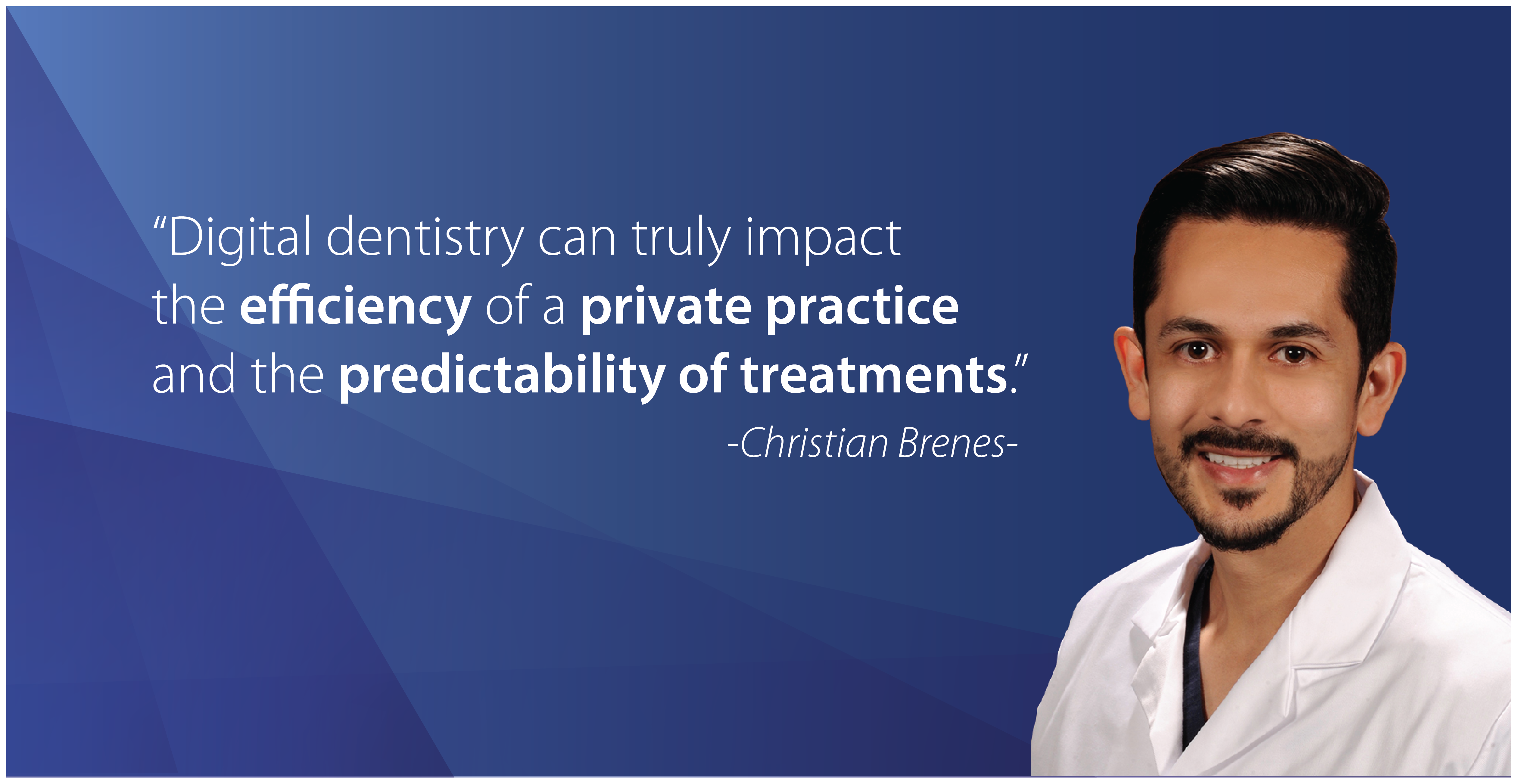
Dr. Christian Brenes is a prosthodontist who is passionate about helping dentists and technicians in their transition into the world of digital dentistry as the director of Digital Dentistry Education and an ambassador for the International Digital Dentistry Academy. His work is focused on dental implants, aesthetics dentistry and digital dental technology. When he isn’t improving the lives of his patients, he is nurturing the next generation of dentists as an Assistant Professor at the Dental College of Georgia at Augusta University. We talked with Dr. Brenes to find out more about his work as well as his thoughts on digital dentistry and the reason he is such a strong advocate of its benefits.
As a prosthodontist, you specialize in complex oral and maxillofacial rehabilitations, dental implants and aesthetics. What are some of the challenges you face in your work?
I’ve been involved with digital dentistry for many years and have been totally immersed with digital technologies not only on the clinical side but also in research. As a prosthodontist, I require the highest level of accuracy possible to achieve the best fit for restorations and to achieve passivity in between implant restorations. That is why we are always looking for tools or methods that can provide us with the required accuracy and efficiency. Furthermore, finding a way of tracking changes over time for the analysis of different oral conditions was always a challenge with physical models. Nowadays, the analysis of digital data provides us with the means to store patient data without damage and without taking up physical space.
You’ve mentioned that your interest is in helping dentists and technicians to transition into digital dentistry. What sparked your interest in the field? How long have you been in digital dentistry?
When I was in dental school, I didn’t have access to digital tools but when I began my residency program in prosthodontics and started experimenting out of curiosity; I immediately noticed the advantages of using computers and software instead of analogical tools. I have been totally immersed in digital dentistry for more than 8 years and have dedicated my entire academic career to digital dentistry.
What do you think is the biggest advantage of moving to digital dentistry?
Two major advantages that I always emphasize in my lectures are: efficiency and predictability. Digital dentistry can truly impact the efficiency in terms of how a private practice should operate that will reduce time and increase production. The second advantage is the predictability of treatments; not being totally dependent on subjective clinical abilities to achieve excellent results for our patients; things like accuracy, and the possibility of scanning a replicating natural forms has never been previously seen in the history of dentistry.
What tips do you have for dentists and technicians who are trying to transition into digital dentistry?
Knowledge is power; get educated; find mentors that can guide you through the right path and make the learning curve easier.
As you are in the teaching profession and have been active in research related to CAD/CAM technology, you must have tried out many different scanners. What do you personally like about Medit’s scanners?
Medit is one of the leaders in the industry and what sets the company apart is its focus on scanning technologies. Unlike other providers that have been quickly expanding to different lines of products and not improving their scanning capabilities, Medit has continued to work on the core. Some companies also have good scanners, but I think we are reaching the point in which hardware is very accurate and good for most clinical applications; So for the most part software improvements are the future. Therefore aspects like data analysis, communication and company philosophies regarding how to work with the data will make a big difference in the near future. I think Medit has all of these qualities and is constantly improving.
Could you talk about your experience with the Medit i500 and the Medit T500?
My experience has been extremely positive; in the beginning I was hesitant because I couldn’t believe the price point of the i500, but after trying it, I was very impressed. It has already become one of the main players. As for the Medit T500, it doesn’t even require any explanation; it is one of the best-selling scanners in Europe and has a proven record of being a great product. The software is also very intuitive for both scanners.
What do you think is the future of digital dentistry, particularly in your field of prosthodontics?
The future is bright in digital dentistry; I think instant communication of data, data analysis and AI will be central. I can see the integration of powerful analytics applied to dentistry and how the industry will continue down the path of making things even more efficient and predictable for clinicians and technicians. We all dream about the integration of video capturing for functional movements within intraoral and extra-oral data acquisition; easy integration to CAD software and reduced manufacturing time with the addition of better manufacturing techniques that can replicate nature.
We thank Dr. Brenes for sharing about his work as a prosthodontist as well as his insights on the field of digital dentistry. Find out more about our intraoral scanner, the Medit i500, or our range of dental lab scanners.